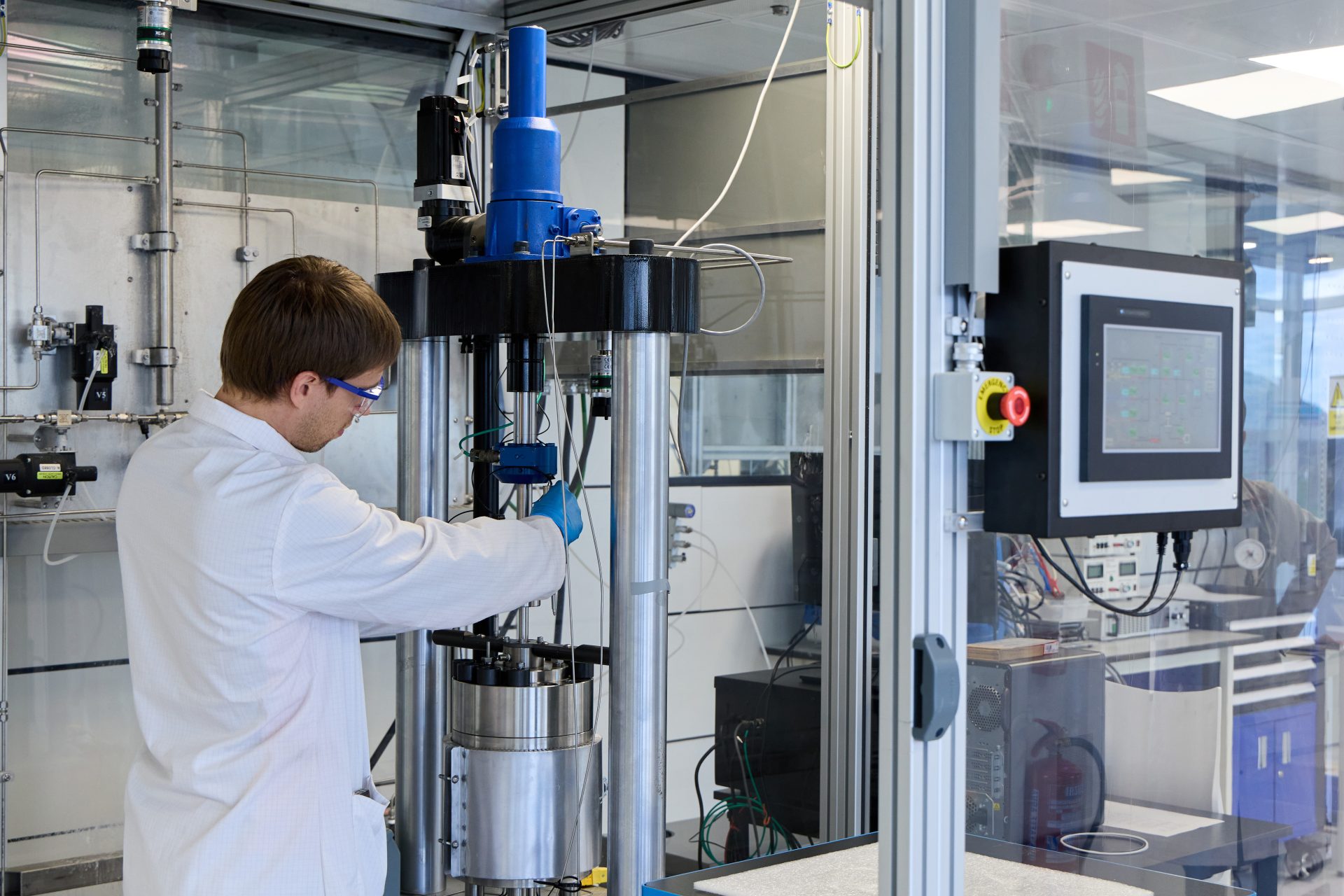"We help companies in the selection of materials for hydrogen compatibility"
We are working on the compatibility, safety and durability of materials with hydrogen
Hydrogen is emerging as a key energy carrier for the economy. The industry faces a fundamental challenge: ensuring the compatibility, safety and durability of the materials used for hydrogen storage, transport, distribution and generation.
Hydrogen permeability and hydrogen embrittlement are the key parameters to evaluate in the selection of materials for hydrogen applications.
- Hydrogen embrittlement is a phenomenon that occurs when hydrogen atoms are introduced into metals, causing a decrease in their resistance and an increase in their susceptibility to the propagation of cracks.
Hydrogen embrittlement of metals
TECNALIA assesses the hydrogen embrittlement of metals for many critical applications, such as storage tanks and pipelines for hydrogen transport, determining the useful life of the components and the critical size of the defects.
We identify and extract critical areas of a component, such as welds or areas of high stress concentration, and subject them to laboratory tests, where their behaviour is evaluated under controlled conditions in the presence of hydrogen gas at up to 250 bar pressure and 250°C.
- This enables us to obtain the tensile properties of the material, monitoring the force-displacement curve in real time.
- Furthermore, it is possible to monitor crack lengths, to understand fracture propagation and the fatigue strength of the material.
Behaviour of the material under different conditions
By combining the multiple data obtained for force, displacement, crack length and elapsed time, we can obtain a full picture of the behaviour of the material under different test conditions.
By adding scanning electron microscopy (SEM) and optical microscopy analysis, we can identify the fracture mechanisms that have occurred and the formation of secondary cracks.
Once the tests have been carried out, we analyse and verify the results in conjunction with our customers; we combine our experimental tests with modelling and integrity analysis techniques, such as finite element analysis.
Our customers are able to improve decision-making for the material selection and design optimisation of components, increasing their resistance and reducing the risk of failure, leading to cost savings.

